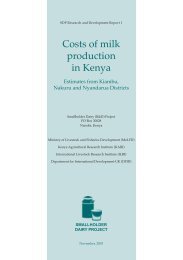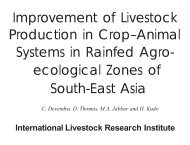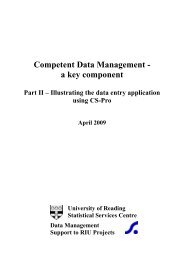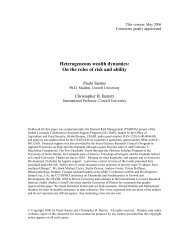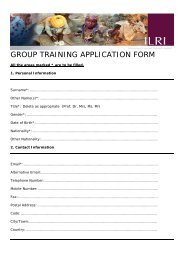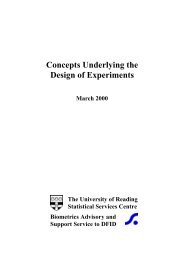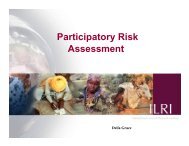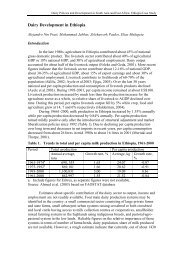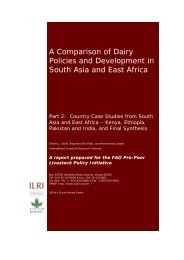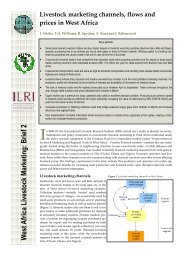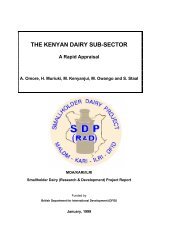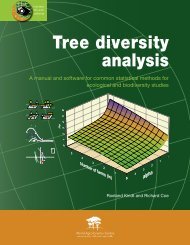Designing ecological and biodiversity sampling strategies
Designing ecological and biodiversity sampling strategies
Designing ecological and biodiversity sampling strategies
Create successful ePaper yourself
Turn your PDF publications into a flip-book with our unique Google optimized e-Paper software.
• Not including all l<strong>and</strong> uses found in the benchmark area, but a selection that covers aclear gradient in l<strong>and</strong> use intensity or represent some typical l<strong>and</strong> use transitions.• Tightening the definition of a l<strong>and</strong> use class. For example, rather than having ‘maizefield’ as a l<strong>and</strong> use, we could limit attention to maize fields that have been in continuouslycultivated for 10 years, have not received fertilizer in the last 3 years <strong>and</strong> are tilled by hoe.• Avoiding samples in ambiguous sample locations, such as those near a boundary.While ways will all help in detecting <strong>and</strong> measuring the effect of l<strong>and</strong> use intensity onBGBD, they may not be consistent with objectives of species inventory. A trade offbetween these two objectives may be necessary. This is common in design, thebottom line being that we cannot expect to find out everything from one limited sizesample.8. Other considerationsThere are two further areas in which <strong>sampling</strong> ideas are important. In Section 4, it wasindicated that the <strong>sampling</strong> location, selected using all the ideas discussed earlier, isnot a point. It will be a <strong>sampling</strong> unit of (usually) fixed area <strong>and</strong> shape within whichmeasurements will be taken. Typically, it will be a plot, for example of 10m x 10m.Some variables, such as tree cover, can be measured on the whole plot. Others, suchas counts of below ground organisms or measurements of soil properties, requirefurther <strong>sampling</strong>. The definition of this within-unit <strong>sampling</strong> is usually part of themeasurement protocol. The aim is simply to provide estimates of the whole-plot valueof the variable which are unbiased <strong>and</strong> of sufficient precision. Since analysis of thedata (detection of patterns linking the different variables) is at the plot or higher level,the specific objectives of the study do not enter the <strong>sampling</strong> design at this stage.When should measurements be made? The studies discussed here are cross-sectional,so that time is not an explicit element of the method. However, decisions have to bemade on when samples will be collected. These should be determined byunderst<strong>and</strong>ing the seasonality in the ecosystems being studied. Suitable times for<strong>sampling</strong> will be when the patterns to be investigated are most strongly expressed. Ifrepeated samples can be taken in time in order to investigate differences betweenseasons, there is a further choice to make. Should the same sample plots be measuredon each occasion, or should a new sample be selected? For most purposes <strong>and</strong>19



